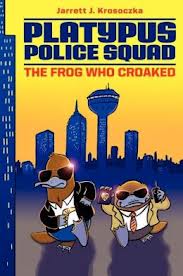Thank you Jen and Kellee for hosting this weekly! To see what others are reading and recommending each Monday, or to participate, be sure to check out their blog Teach Mentor Texts :)
We are huge fans of the Theodore Boone series by John Grisham in my classroom and have been counting down to the day the fourth book, The Activist, was available in stores last week! This series is perfect for reluctant readers and/or readers who love mystery, suspense, and a page-turner! I have read and loved all of the books in this series and now can not wait for the fifth book to come out...hopefully there will be a fifth!! If you haven't tried this series, I encourage you to pick up the first book, Theodore Boone: Kid Lawyer, and give it a try - you won't be disappointed. :)
We are currently in our historical fiction book club unit and have been reading various historical fiction picture books and chapter books during read aloud - click here to read my posts on our historical fiction unit. One of the books we read aloud and loved was Freedom on the Menu: The Greensboro Sit-Ins by Carole Boston Weatherford so I was excited to find a companion text to read aloud titled Sit-In: How Four Friends Stood up by Sitting down by Andrea Davis Pinkney and Brian Pinkney. This is a great book to read aloud and compare to Freedom on the Menu to discuss similarities and differences on how the two books shared the story of the same situation. One of my favorite parts of the books is the detailed Author's Notes and the large timeline of important events in the back of the book.
In my classroom, we are also fans of the My Life as a... series by Janet Tashjian and were so excited to buy and read My Life as a Cartoonist when it came out this month! This series is perfect for reluctant readers and readers who enjoy and benefit from illustrations to help them understand vocabulary too. The idea of having sketches in the margins throughout this series, to help define vocabulary used in the story, is brilliant! It not only helps readers navigate through some vocabulary, but also makes it fun to read too! Thank you Janet Tashjian for continuing to add books to this series!
Enjoy Reading! :)







































